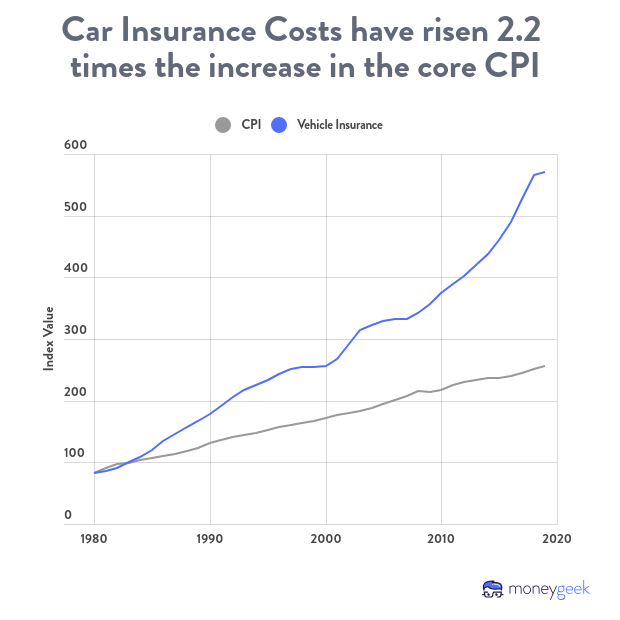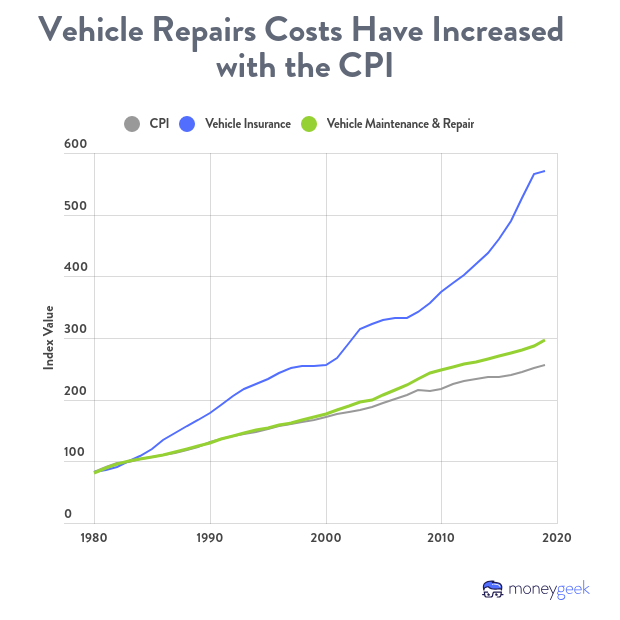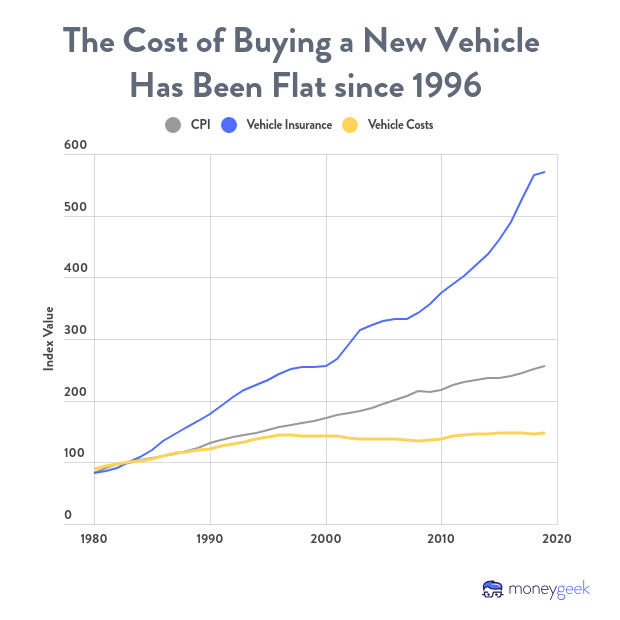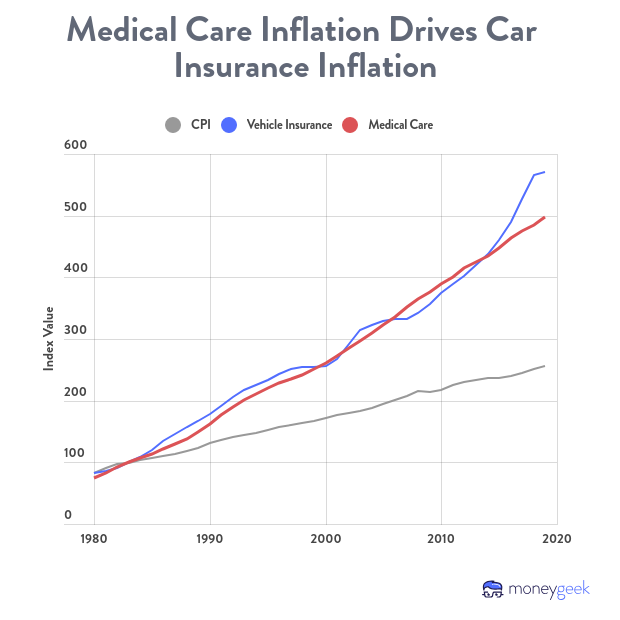
Repairs Have Risen With the Overall Cost of Goods
The monetary value of repairing a car has increased at the lapp rate as the overall CPI, which isn ’ thyroxine surprise because repairing a cable car is chiefly labor-intensive. While the technologies inside the cable car have changed, the need for a good machinist hasn ’ t. 
The Cost of Buying a New Vehicle Is Similar to the Cost in 1996
According to the BLS ’ s new vehicle exponent, the cost of buying a raw car in America has remained basically two-dimensional since 1996. On its own, that ’ s a surprise statistic. This means that collisions that end up totaling cars aren ’ t the argue why car indemnity prices have skyrocketed. 
Check Out the Cost of Medical Care Over Time
As the costs of medical manage have exploded over the past 40 years, the inflation in car policy costs has closely followed the same trajectory. As it turns out, your car policy expenses aren ’ metric ton as much about the vehicles involved but preferably the humans who are involved with car insurance claims. 
Why Are Car Insurance Costs Increasing Faster Than Medical Care Costs?
recent increases in car insurance expenses — over and above medical costs — are explained by senior high school losses due to extreme upwind and the increasing number of vehicle miles traveled by Americans each year. The total vehicle miles traveled report for more cars on the road and for increased amounts of time drive by individuals. According to the global insurance company Aon, 2010 to 2019 was the most dearly-won ten ever for insurers. In 2019, the United States suffered $ 68 billion of damages due to natural disasters. The Insurance Information Institute estimates that the U.S. had catastrophe-related damages upwards of $ 100 billion in 2017 and it expects increased temperatures, dangerous storms and wildfires to be a swerve in indemnity claims. In fact, anterior to a bill banning the practice, insurers in California were dropping coverage in fire-prone communities .
Auto Insurance Premiums Forecasted to Increase by 24% (or More)
To get a sense of where car insurance premiums are headed, the MoneyGeek team built a bode of the car indemnity inflation index for the adjacent 10 years. The calculate was based strictly on the expect inflation rates of checkup costs, angstrom well as the expected vehicle miles traveled, to forecast what car indemnity premiums will cost in 2030.
Read more: Best car insurance companies for 2022
The Centers for Medicare and Medicaid Services ( CMS ) predict a 2.4 % annual inflation rate for aesculapian care, while the Federal Highway Administration forecasts a 1.1 % annual increase in fomite miles traveled. This model forecasts car insurance premiums to increase by 24 % by 2030. importantly, this forecast includes no expectations for increase natural disaster damages. Across the state, many individuals should expect their car indemnity rates to increase a lot more than 24 %, particularly if they are living in areas particularly prone to natural disasters, such as fire, hurricane, crack and deluge, among others .
What Can You Do About It?
While some factors may be out of your control when it comes to car indemnity, you do have options to keep your premiums abject. Shop around for more low-cost car indemnity and find discounts you did n’t take advantage of in the previous class. Taking the time to do an apples-to-apples car indemnity quotation comparison may save you money by making a switch to a different insurance company. You can besides use driver-monitored tools and programs, such as State Farm ’ s Drive Safe and Save™ program and Progressive ’ second Snapshot program. Your repel commemorate has an affect on your cable car policy costs, and these tools help you understand your driving habits. additionally, you can take a defensive drive path to improve your skills behind the steering wheel. Over time, you might consider changing the type of vehicle you drive and your current coverage. It helps to reevaluate your policy each year, specially if your circumstances change. besides, try bundling your car and homeowners insurance for extra savings.
If you have n’t taken a look at your credit grudge recently, you may want to see if it changed from last year. Improving your credit score can besides help to lower your cable car policy premiums .
Forecast Methodology
To forecast future car indemnity costs, MoneyGeek used a linear arrested development. The car indemnity price index was the dependent variable. The aesculapian care price index and fomite miles data were mugwump variables. The projection of medical cost increases made by the Centers for Medicare and Medicaid Services of 2.4 % was used to forecast the medical price index. protrusion of 1.1 % annual increases by the Federal Highway Administration was used to project future mileage. The model does not include any variables to account for potential lifelike disaster claims .
About the Author
Doug Milnes is the head of selling and communications at MoneyGeek. He has spent more than a decade in corporate finance performing valuations for Duff and Phelps and fiscal planning and analysis for assorted companies including OpenTable. He holds a master ’ s degree in Predictive Analytics ( Data Science ) from Northwestern University and is a CFA lease holder. Doug geeks out on building fiscal and predictive models and using data to make inform decisions .